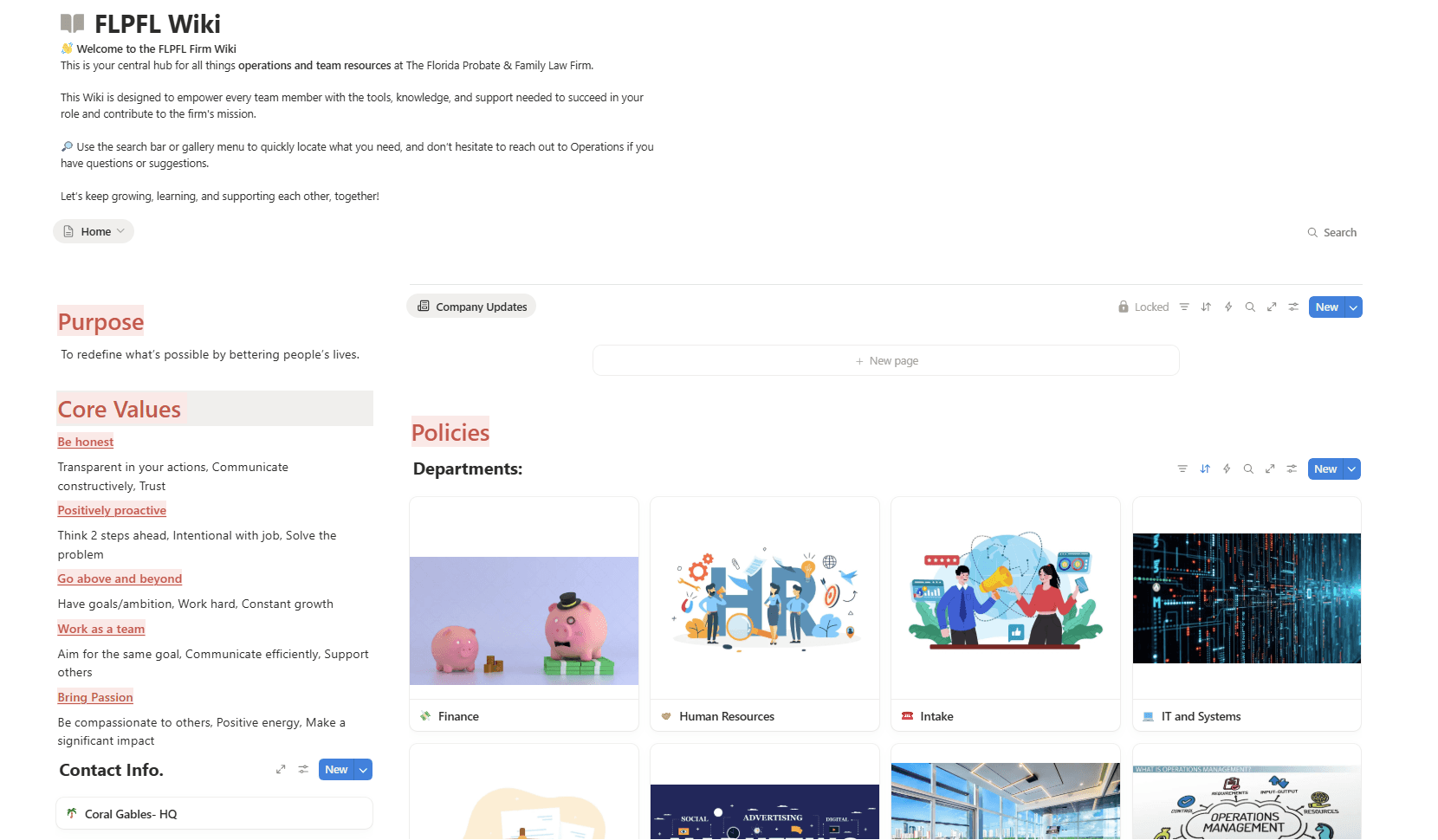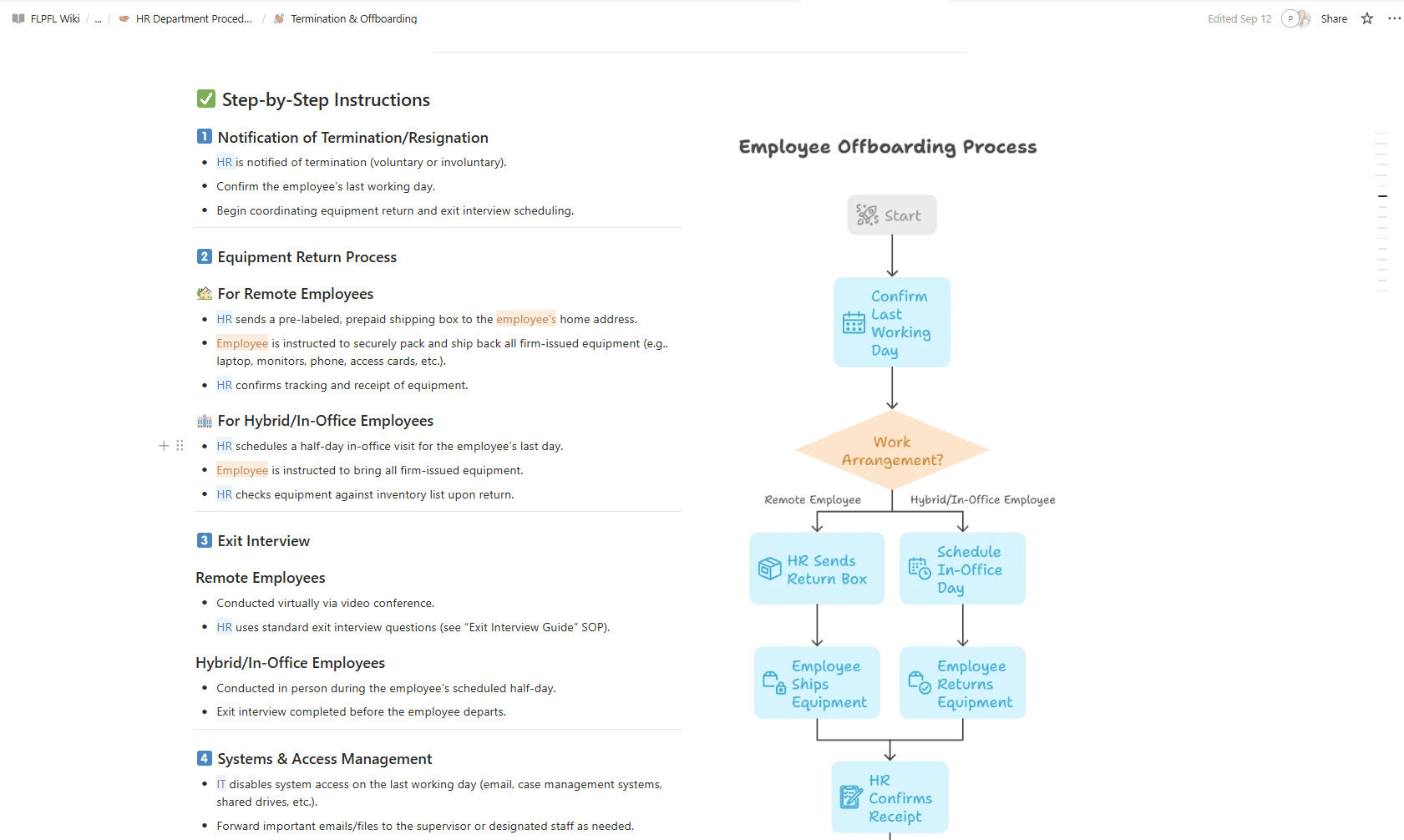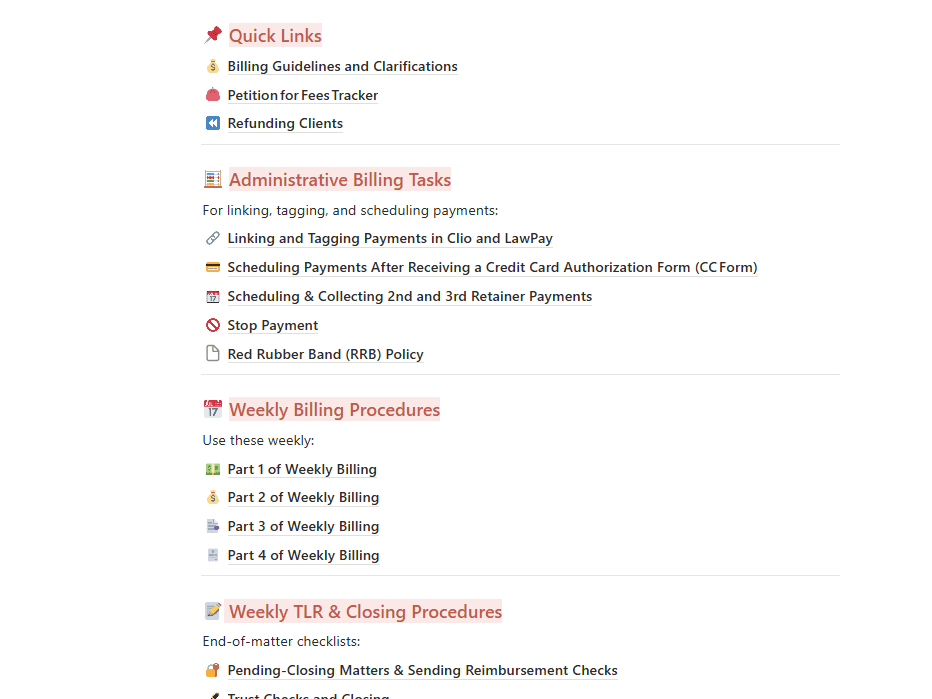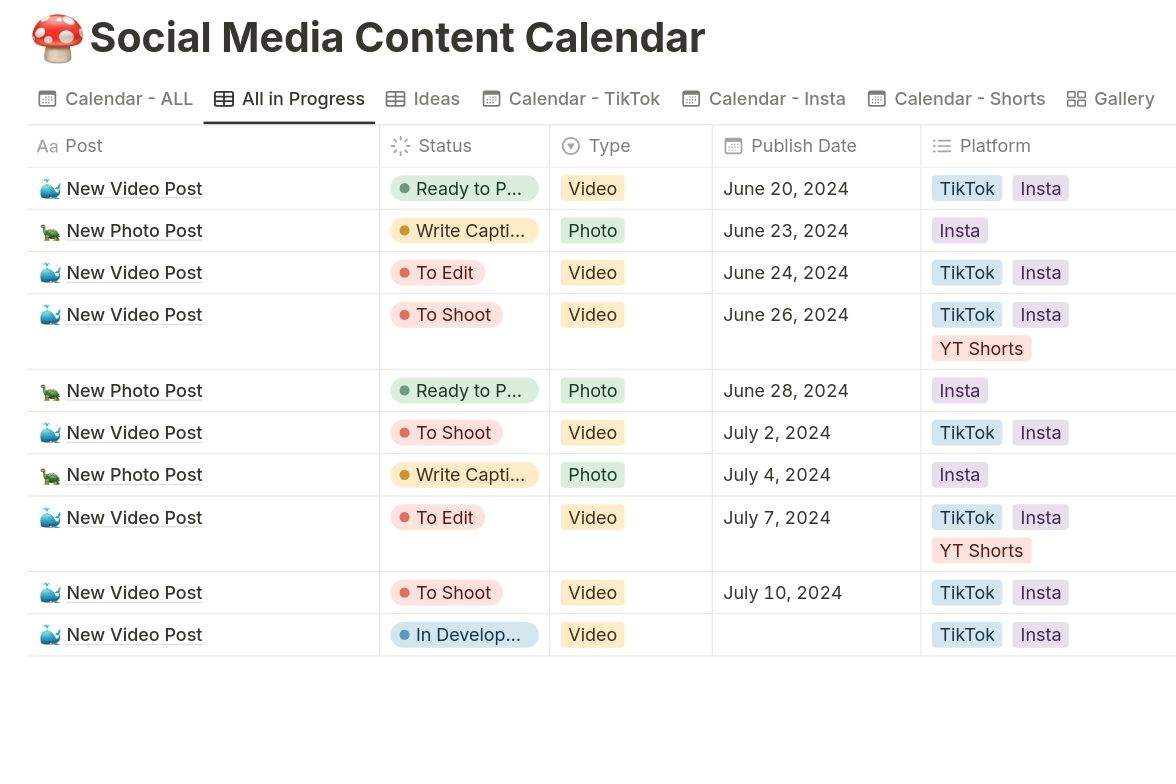The Secret Weapon Behind Every Successful Law Firm (Hint: It's Not What You Think)
01 — The Problem: When Success Depends on Mind Reading
Picture this: A 50+ person law firm where critical information exists only in employees' heads. New hires spend months learning "how things really work." When someone goes on vacation, projects stall. When someone leaves, knowledge walks out the door with them.
The Chaos Before SOPs:
Inconsistent client service across different team members
Extended onboarding periods (3-6 months to full productivity)
Operational bottlenecks when key personnel were unavailable
Knowledge loss every time an employee departed
Time waste from constant "How do I...?" questions
Compliance risks from undocumented procedures
02 — The Solution: Building the FLPFL Wiki Knowledge Empire
I didn't just write documentation, I architected an entire knowledge management ecosystem that transformed institutional chaos into operational excellence.
Using Noltion as the base tool, I was able to transform a chaotic law firm employee based knowledge into a detailed and visually appelaing database. Every role. Every task. Document. With variying access for all team members, it is now easier to onboard, train, and cover for all.
03 — Creative process
Researching
Before writing a single SOP, I conducted comprehensive interviews across all departments to uncover the "tribal knowledge" that kept the firm running:
Shadowed employees to document actual workflows (not what people thought they did)
Identified process variations between team members doing the same job
Catalogued decision trees for complex client situations
Mapped dependencies between departments and roles
Discovered compliance requirements buried in individual practices
Frameworking
I developed a standardized SOP structure that made complex legal processes accessible to everyone:
SOP Template Structure:
Purpose & Scope: Why this process exists and when to use it
Roles & Responsibilities: Who does what (eliminating confusion)
Step-by-Step Procedures: Clear, actionable instructions
Decision Points: What to do when situations vary
Resources & Tools: Links to forms, software, contacts
Compliance Notes: Legal requirements and deadlines
Troubleshooting: Common issues and solutions
Crafting the copy
Created a centralized, searchable knowledge hub that became the firm's operational backbone:
Wiki Categories:
Client Intake & Onboarding Procedures
Case Management Workflows
Court Filing Requirements by County
Internal Communication Protocols
Technology & Software Guidelines
HR Policies & Employee Handbook
Compliance & Legal Requirements
Emergency Procedures & Backup Plans
Vendor & Partner Directory
Template Library & Forms
04 — Sample SOP: Client Intake Proces
Before (Chaos):
Each paralegal handled new clients differently, leading to missed information, inconsistent file setup, and varying service quality.
After (Systematic Excellence):
SOP: Initial Client Consultation Process
Purpose: Ensure consistent, professional client intake that captures all necessary information and sets clear expectations.
Step 1: Pre-Consultation Preparation (24 hours before)
Review client's initial inquiry form
Prepare case type-specific intake packet
Block calendar for 90-minute consultation window
Send confirmation email with required documents list
Step 2: Consultation Meeting Protocol
Welcome client and explain consultation process (5 minutes)
Complete detailed intake questionnaire (30 minutes)
Explain legal process and timeline (20 minutes)
Discuss fees and payment options (15 minutes)
Provide written summary of next steps (10 minutes)
Schedule follow-up within 48 hours (10 minutes)
05 — Measurable Impact
Onboarding time reduced from 2-4 months to 2-3 weeks
Cross-training capability increased by 300% (anyone could cover any role)
Error reduction of 60% in client intake, administrative management
Process standardization across all departments eliminated inconsistencies
Knowledge Management:
Institutional knowledge preservation protected against employee turnover
Searchable procedures eliminated repetitive questions to supervisors
Version control ensured everyone worked from current procedures
Continuous improvement system for updating processes based on feedback
Business Growth Support:
Scalable operations prepared firm for expansion
Quality assurance maintained service standards during growth
Training efficiency enabled faster integration of new hires
Compliance confidence reduced legal and regulatory risks
Cultural Impact:
Empowered employees with clear expectations and procedures
Reduced stress from uncertainty about "right way" to do things
Improved client service through consistent, professional processes
Management confidence in delegating responsibilities



